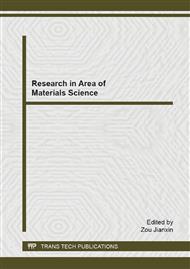p.292
p.297
p.302
p.309
p.315
p.319
p.325
p.331
p.336
A Novel Modified Paris’ Law Based Evaluation of Fatigue Crack Propagation of LD2 under Combination of Corrosion and Cyclic Loadings
Abstract:
The present thesis made a research to evaluate fatigue crack growth rate subjecting to corrosion and cyclic fatigue loading, with the effect of load frequency on fatigue taken into account. A modified Paris’ law based model is proposed. An exponential modified expression of proportional parameter account for fatigue frequency is proposed based on the obvious fact that low frequency loading will lead to long fatigue life, thus prolong interaction time between corrosion media and specimen which will favor for crack propagation. Loading frequency higher enough will shorten that time, thus influence of corrosion will be significantly weaken, close to pure mechanical fatigue. Crack growth rate prediction from proposed formula is proved to be in good agreement with experimental results for steadily extended corrosion fatigue crack.
Info:
Periodical:
Pages:
315-318
Citation:
Online since:
April 2015
Authors:
Keywords:
Price:
Сopyright:
© 2015 Trans Tech Publications Ltd. All Rights Reserved
Share:
Citation:


